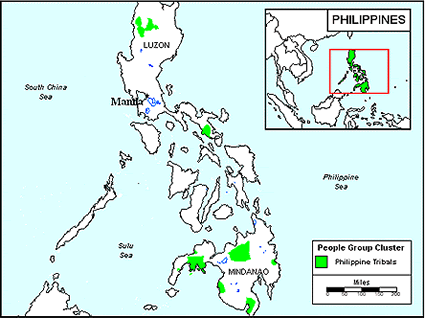Miraya Bikol is the name of a tribe in the Philippines that is defined by their language which bears the same name. Their speak an Austronesian language family and is part of the Bikol macrolanguage. Their homeland is in Albay Province on southern Luzon Island.
The principal crops are wet rice and maize; while vegetables, tobacco, and coffee are grown as secondary crops. Some domestic animals such as dogs, goats, and chickens are also raised on Miraya Bikol farms.
The most common method of farming is in "swidden" fields. (These are temporary gardening plots produced by cutting back and burning off the existing vegetation.) The plots usually lie adjacent to their homes. The farmers depend heavily on irrigated rice terraces which are located on the mountain slopes. Since such "slash and burn" techniques are still used, the crop yield is generally poor. To make matters worse, deforestation is also causing problems for the Miraya Bikol.
Most Miraya Bikol villages are arranged in clusters around individual gardens. The basic unit of society among these tribes is the extended family. Marriages are most often arranged while the prospective bride and groom are very young.
Most Miraya Bikol identify as Roman Catholic, but their ancient religious practices remain. Like most tribal peoples in the Philippines, they can easily put their faith in spirits and objects rather than the sovereignty of Jesus Christ. There are some among them who live out the Christian faith and can be Christ bearers to others.
The modern world is catching up with tribal peoples like the Miraya Bikol. They need ways to enter an unfamiliar workforce.
Pray for loving Christians to reach the Miraya Bikol people through job and language training.
Pray for God to give them a record-high harvest as a testimony of his goodness and power.
Pray for the right strategies to reach the Southern Kalinga people to Christ.
Pray for the Lord to give Miraya Bikol family leaders the spiritual hunger it takes to seek and find the Lord.
Ask God to strengthen, encourage, and protect the small number of Christians living among them.
Scripture Prayers for the Bikol, Miraya in Philippines.
https://bcl.wikipedia.org/wiki/Miraya_Bikol
| Profile Source: Joshua Project |











